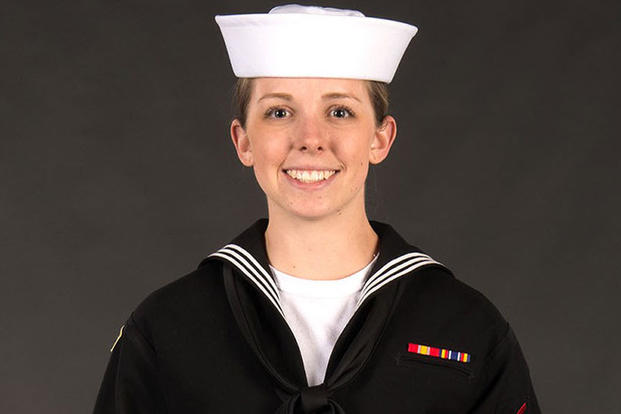Hate the new "dixie cup" hat? Love the choker-style dress white coat? If you're a female sailor, Congress wants to hear from you.
In response to a congressional mandate included in the 2017 National Defense Authorization Act passed in December, the Navy is inviting 8,000 randomly selected female sailors, including active-duty and Reserve sailors of all ranks, to participate in a survey soliciting feedback on new uniform items, many of which are designed to more closely resemble the uniforms of male sailors.
The 34-question survey, launched Monday, includes questions asking sailors to rate the style, appearance and uniform suitability of four recently introduced uniform items: the unisex dress cover for officers and chiefs; the enlisted white "dixie cup" dress cover; the choker-style dress coat for officers and chiefs; and the enlisted jumper-style "Cracker Jack" dress blues.
The survey also includes sections where respondents can submit open-ended feedback, and a place where they can rate their feelings on the concept of making female uniform items more like male ones.
The iconic "dixie cup" cover was first issued to female recruits at boot camp last April, with enlisted sailors in the fleet given until October 2016 to adopt the new cover with the service dress white uniform and until 2020 to wear it with the service dress blue.
The choker-style dress white coat is scheduled for mandatory wear in 2020 and was made available for purchase on the first of this year.
The jumper-style "cracker jack" dress blues began to be issued at boot camp Oct. 1, 2016, and will be required for wear at the start of 2020.
And the unisex dress cover mandatory wear date was just pushed back by Congress to Oct. 31, 2018.
The unisex uniform looks were developed under recently departed Navy Secretary Ray Mabus in a move designed to minimize the differences between the genders in uniform.
Just before he left office ahead of President Donald Trump's inauguration, Mabus told Military.com during a briefing with reporters that he was inspired to change the uniforms by his attendance at the annual Army-Navy football game. He realized that it was impossible to distinguish West Point cadets by gender as they marched onto the field, because their uniforms were all the same. That was not the case for the Naval Academy, where female and male uniforms had clear differences.
The rapidity of the changes and the cost associated with them raised the hackles of some lawmakers. In a markup of the 2017 NDAA last spring, the House Armed Services Committee wrote that it was "concerned" that the recent changes were not consistent with the Navy's standard process for evaluating and selecting new uniform items, did not take into account out-of-pocket expenses for sailors, and were not driven by any operational necessity.
The budget bill delayed the rollout of one uniform item, the unisex dress cover, from Oct. 31, 2016, to Oct. 31, 2018. It also required the Navy to submit a report to the House and Senate Armed Services Committees including the opinions of female sailors on the uniform items, as well as identification of the operational need for the new unisex covers and assessment of the cost to the service and individual cost to sailors of the new uniform items.
The report was due to Congress by Feb. 1, but Navy officials said the deadline did not provide sufficient time to conduct the required survey. The service provided an interim response to Sen. John McCain and Rep. Mac Thornberry, chairmen of the Senate and House Armed Services Committees, in January, a spokeswoman for the chief of naval personnel, Lt. Jessica Anderson, told Military.com.
"It takes time to build a survey that provides valuable information and then distribute it to the fleet. Before sending the survey out, we socialized the survey with the Navy's senior enlisted leaders to ensure we were asking the right questions," Anderson said. "It takes additional time to upload the survey questions to the survey vehicle and obtain respondent information from commands selected to participate to allow for proper access."
The survey will be open for 30 days. Anderson said Navy officials will compile the other information requested by Congress with analysis of the survey responses and deliver the finished report to Capitol Hill upon completion of that process.
"We will conduct a thorough analysis of the survey responses as quickly as possible," she said. "The results of this survey will be used to inform the Navy's way ahead on a number of uniform matters we know are of interest to female sailors."
-- Hope Hodge Seck can be reached at hope.seck@military.com. Follow her on Twitter at@HopeSeck.
Related Video:
Two Minute Brief: Women in the U.S. Military






























